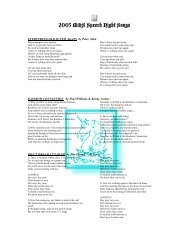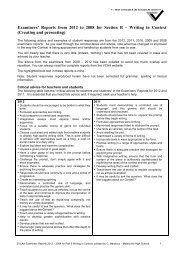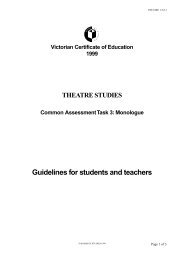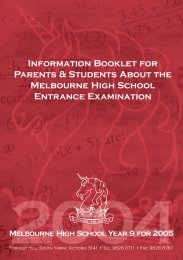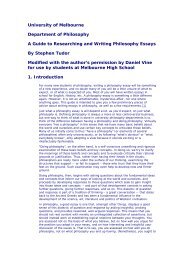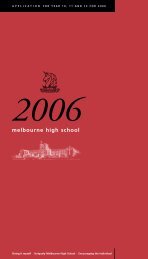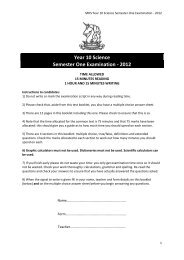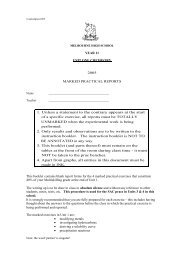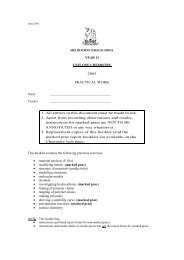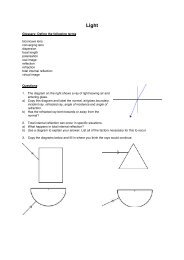Part II consists of a separate question and answer book.
Part II consists of a separate question and answer book.
Part II consists of a separate question and answer book.
- No tags were found...
Create successful ePaper yourself
Turn your PDF publications into a flip-book with our unique Google optimized e-Paper software.
3 FURMATH CAT 2BSpecific instructions for studentsThere are three short-<strong>answer</strong> <strong>question</strong>s.Answer all parts <strong>of</strong> the <strong>question</strong>s in the spaces provided in this <strong>question</strong> <strong>and</strong> <strong>answer</strong> <strong>book</strong>.The table below shows the monthly rainfall (in millimetres) <strong>and</strong> the number <strong>of</strong> days on which it rained eachmonth for a Victorian rural city in 1998.Table 1: Monthly rainfall data for 1998Jan Feb Mar Apr May June July Aug Sept Oct Nov DecRainfall (mm) 28 31 33 41 53 65 64 56 47 48 34 26Number <strong>of</strong> rain days 4 5 3 6 9 11 14 12 9 8 6 5Question 1a. Complete the following table by classifying each <strong>of</strong> the variables in the table as numerical or categorical.VariableType <strong>of</strong> dataMonthRainfall (mm)numericalNumber <strong>of</strong> rain days2 marksb. Use the information in Table 1 to determine the percentage <strong>of</strong> months in 1998 which had more than 10rain days. Write your <strong>answer</strong> in the space provided.percentage =1 markc. Using the data in Table 1, calculate the st<strong>and</strong>ard deviation <strong>of</strong> the number <strong>of</strong> rain days. Write your <strong>answer</strong>correct to two decimal places in the space provided.st<strong>and</strong>ard deviation =2 marksTotal 5 marksTURN OVER



